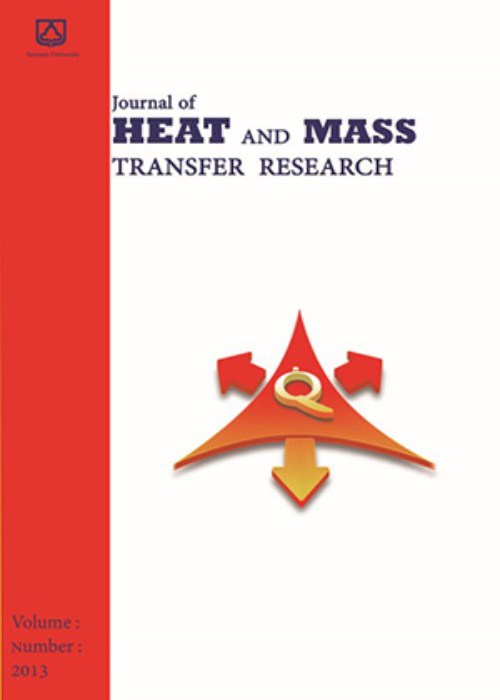The Numerical analysis of an anode-supported high temperature DIR-PSOFC operating conditions with considering the maximum allowable temperature difference
Author(s):
Abstract:
In the present study, the operating conditions of an anode-supported high temperature direct internal reforming (DIR) planar solid oxide fuel cell (SOFC) are numerically analyzed. SOFCs are the energy conversion devices that produce electricity and heat directly from a gaseous fuel by the electrochemical combination of that fuel with an oxidant. A planar SOFC consists of an interconnect structure and a three-layer region often referred to as the PEN (Positive electrode/Electrolyte/Negative electrode) composed of two ceramic electrodes, anode and cathode, separated by a dense ceramic electrolyte. A 1D mathematical model based on the species and the energy balances is conducted to investigate the concentration of the gas components in the channels and the cell temperature distribution in both solid structures and gas channels. In addition, the electrochemical model of the cell is applied to determine its performance parameters. A synthesis gas with 10% pre-reformed methane as fuel stream is fed to the cell and the water-gas shift, the methane-steam reforming and the electrochemical reactions are considered as mass and heat sources/sinks. The effects of the air ratio and the fuel utilization factor on the temperature field and the performance of the cell are examined through parametric analysis to determine the optimum operating conditions of the cell. The investigations are performed to ensure no cracking will occur due to cell crucial temperature difference. The results indicate that increasing the fuel utilization factor from 0.45 to 0.85 leads to increase the value of the maximum temperature difference across the PEN layer from 101K to 145K while it decreases from 177K to 124K by increasing the air ratio from 6.5 to 12.5. In order to achieve the maximum power density by considering the maximum allowable temperature difference across the cell, the value of the fuel utilization factor and the air ratio are obtained 0.85 and 9, respectively.
Keywords:
Numerical analysis , Fuel cell , SOFC , DIR , PSOFC
Language:
English
Published:
Journal of Heat and Mass Transfer Research, Volume:2 Issue: 2, Summer-Autumn 2015
Page:
15
magiran.com/p1553031
دانلود و مطالعه متن این مقاله با یکی از روشهای زیر امکان پذیر است:
اشتراک شخصی
با عضویت و پرداخت آنلاین حق اشتراک یکساله به مبلغ 1,390,000ريال میتوانید 70 عنوان مطلب دانلود کنید!
اشتراک سازمانی
به کتابخانه دانشگاه یا محل کار خود پیشنهاد کنید تا اشتراک سازمانی این پایگاه را برای دسترسی نامحدود همه کاربران به متن مطالب تهیه نمایند!
توجه!
- حق عضویت دریافتی صرف حمایت از نشریات عضو و نگهداری، تکمیل و توسعه مگیران میشود.
- پرداخت حق اشتراک و دانلود مقالات اجازه بازنشر آن در سایر رسانههای چاپی و دیجیتال را به کاربر نمیدهد.
In order to view content subscription is required
Personal subscription
Subscribe magiran.com for 70 € euros via PayPal and download 70 articles during a year.
Organization subscription
Please contact us to subscribe your university or library for unlimited access!


